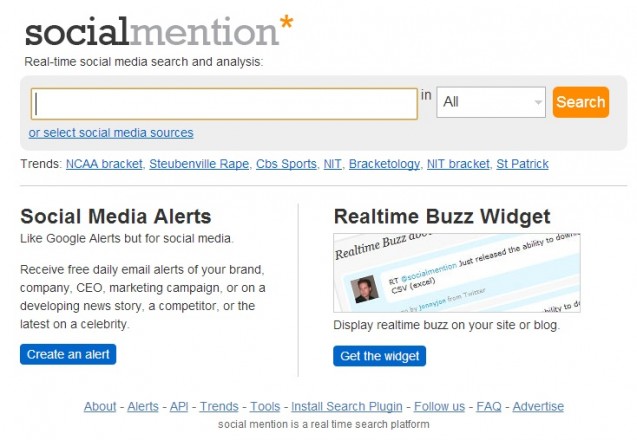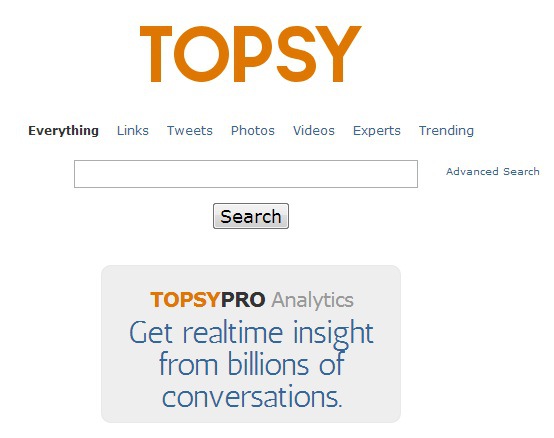As the search engines change, the amount of effort required to build a resilient and worthwhile link increases. It’s becoming difficult enough that some are starting to argue that link building is becoming passe. Link earning is the way to move forward. Easier said than done, no doubt.
Most link earning guides focus on the content, and for good reason. High quality content is what earns links. But that subject has been done to death. What are some more specific steps you can take to start earning links? What can you do outside of producing “great content” that will capture natural search engine activity? Here are 5 simple answers to those questions.
1. Mention Influencers
This strategy is so ridiculously successful it’s amazing how infrequently it’s used. Perhaps it’s a fear that linking away from your own site will somehow cause you to lose customers, or maybe it’s a concern that this practice somehow even hurts your SEO.
Nothing could be further from the truth.
When you talk about influencers, they are more likely to take notice, and either tweet you along or send a link your way. It certainly never hurts to reach out and tell them you mentioned them with an email or, often better, an @ mention. If the content is good, you’re much more likely to get a retweet or a link than you might think.
Consider this post by HubSpot: 39 Fantastic Inbound Marketing Blogs You Ought to Be Reading. According to ahrefs, this post picked up 3,372 backlinks between publication and February 16, less than two weeks.
Influencers love getting a mention, and love to pass it along to their followers. It’s a great way to get links from influencers and their followers, assuming the content is good enough to stand up on its own.
2. Work With a Photographer or Graphic Designer
There’s no question about it, people love to link and share high quality images. It is well worth the time to work with an established designer or photographer. Of course, an influential designer can send a link your way, but the end product can be incredibly effective as a method of attracting additional links.
A few great places to use images to build exposure:
– Tumblr
– Flickr
These are all great places to expose your images as well as find people to hire and work with.
Be sure to optimize your images for the platform you want them to propagate through. For example, when it comes to Pinterest, a good infographic (or better yet, instructographic) is sized about 500 px wide and 2,500 px tall. This makes it big enough that you need to click through to see the whole image, and small enough so that people will scroll back up and “pin” the image.
In contrast, if your Facebook images are sized too long, they get cut off so that users can’t tell what they are about at all.
Other than the attractiveness of the image itself, size is easily the most important thing you need to consider with image marketing.
3. Advertise on Facebook
This is powerful, and anybody who says it doesn’t work isn’t doing it right. User engagement levels are through the roof when you pull traffic from Facebook. It’s not uncommon to see the average time on site from Facebook at five times the level we see from search engines, consistently.
Facebook ads attract users who are already in a sharing mindset. With the ability to select precise interests, you can draw visitors with a strong interest in the content who will share it with their friends.
The cost per visitor will depend on your niche, but it’s fairly easy to get the price as low as $0.20 per visit if you’re targeting low competition interests. This may not sound mind-blowing, but for a couple dollars it’s easy to test the effectiveness of your content with a reasonable level of accuracy.
Remember, you only have to pay for the users who actually click on the ad. If they like it and share it with their friends, those visits are free. A good piece of content will double the number of visitors.
We recommend spending a few dollars on Facebook ads for each new post. It’s a good way to test each piece of content. Every once in a while you’ll notice a piece of content that does especially well. That’s when you want to increase spending and seed your content to the point of virality. Once your content goes viral on Facebook it will naturally attract links.
A word of caution: there is far to much emphasis on “likes” when it comes to content marketing on Facebook. You really want to encourage your users to share the content, not “like” it. If you use Facebook yourself, I’m sure you can remember a time when somebody shared a piece of content they found on the web. When was the last time you saw them “like” something other than a comment or something somebody else had posted? Your content won’t go viral unless it gets shared. You’re probably better off if you don’t even have a “like” button in your blog post.
Use a share button instead.
We recognize that there’s more to Facebook marketing than advertising, and we strongly recommend building relationships with influencers as a method of building exposure, but we also feel that Facebook ads are extremely underutilized as a method of attracting attention online.
4. Release an eBook
Take a look at what Shane MeLaugh did to boost his traffic. Instead of waiting until his traffic was large enough to sell his ebook, he sold the ebook first, and used it to drive traffic to his website. This more than doubled his traffic in a very short period of time.
It shouldn’t be hard to understand why. Ebooks naturally attract reviews, responses, and online discussion, which is of course the basis of all natural links.
Since it’s fairly natural for an eBook to come along with a subscription to a newsletter, this is a great way to grow your subscriber list. Since these subscribers have already bought your eBook, they have spent a great deal of time reading what you have to say and have already grown to trust you. These are the kinds of readers who matter the most, who are most likely to share and link to your content.
An eBook is also a powerful excuse to convince others to promote your site. If you have an affiliate program, marketers and influencers will be strongly incentivised to share your product with their audience. Bloggers will be more excited to interview you if they see that you have a book to talk about. Forums and social networks will be more likely to have a conversation about a book than a blog post.
It’s relatively easy to get an eBook to rank in Amazon, where search terms are far less saturated. You can even leverage Amazon’s domain authority to get your book ranking quite well in Google’s search results without too much effort. If the book is good enough it will attract positive views that will further increase sales. This does a lot for exposure, which of course leads to natural links. Just be sure to get your website address on the book and in the pages.
5. Analyze the Social Space
Social tools are incredibly helpful as a source of inspiration. By understanding who and what goes viral, you can learn to construct content that naturally attracts links faster than any manual link building method.
Social Mention

This is an incredibly useful tool for discovering what’s hot in your niche right now and who is most successful in the social space. A search from the front page will take you to a list of the most important social mentions across a very wide variety of channels.
The left sidebar shares some incredibly useful information, including the most influential people in the niche, related keywords and hashtags, the most successful channels for your niche, and several engagement metrics.
One of Social Mention’s most generous offerings is an open API that you can use to analyze what’s happening in the social space algorithmically.
Topsy

While it doesn’t analyze as many sources as Social Mention, Topsy offers, in my opinion, the best combination of features. One of the most underrated of these is their native analytics service, which allows you to compare up to 3 search terms and how interest has changed over time.
Topsy’s search engine allows you to search by latest results or one of several other date ranges. Perhaps the most underrated feature is the ability to see which results were the most socially successful in your niche of all time. This is an incredibly powerful source of inspiration that can help you gain an intuitive understanding of what’s most likely to go viral.
Of course, the ability to see what is trending in your niche over the past hour, nine hours, day, week, or month can also be very helpful. Staying real time is important for many bloggers, and being one of the first people to respond to a subject can give you quite a bit of credibility. Topsy’s list of trending topics can also be a great source of ideas to “newsjack,” provided you approach the practice tactfully.
Conclusion
It’s time to stop building links and start earning them. The tools are at your disposal to make it happen. With eBooks, ads, mentions, images, and social tools, you can build the exposure necessary to dominate your competition with truly natural links. Thanks for reading, and be sure to pass this along if you found it helpful.



